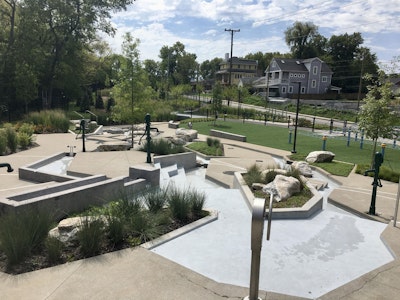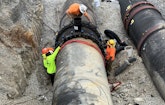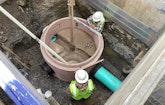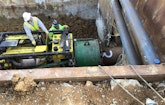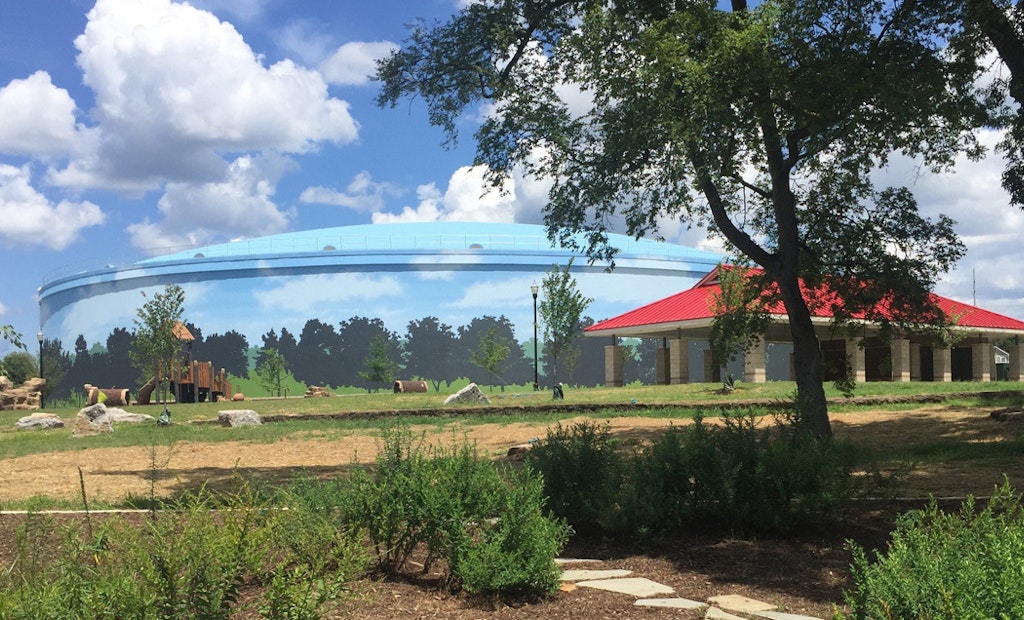Interested in Infrastructure?
Get Infrastructure articles, news and videos right in your inbox! Sign up now.
Infrastructure + Get AlertsAfter more than a decade of planning, a $2.7 billion program to upgrade sewer system infrastructure and mitigate combined and sanitary sewer overflows is in full swing in Nashville and surrounding Davidson County.
The aptly named Clean Water Nashville initiative stems from a consent decree signed by a federal judge in March 2009. The decree has been amended since then and now gives the Metro Water Services utility until December 2031 to meet the decree mandates, which include full compliance with the Clean Water Act and elimination of sanitary sewer overflows, says Ron Taylor, director of the CWN program.
When the sprawling endeavor is completed, residents of the city of Nashville and Davidson County (the two entities merged to form a metropolitan government in 1963) will benefit from more than 300 miles of newly lined sanitary sewers; a $400 million expansion of the Central Water Reclamation Facility, the largest of the utility’s three wastewater treatment plants; 80 million gallons of wet-weather storage capacity, courtesy of seven new, strategically located storage tanks; separation of roughly 30 miles of combined sewers; and the installation of approximately 38 miles of new, larger sanitary and storm sewers, Taylor says.
“This is one of the largest infrastructure programs ever undertaken in Nashville and it certainly is the largest capital improvement program ever undertaken by Metro Water Service,” he says.
The biggest component of the program is rehabilitation of sanitary and combined sewers, primarily by lining them with cured-in-place pipe. About two-thirds of the total cost will go towards fixing SSOs and another third will go towards fixing combined sewer overflows, which mostly occur in downtown Nashville where the city’s oldest sewers are located, Taylor says.
The utility manages about 348 miles of combined sewers.
“We’ve already lined 200 miles of leaking sanitary sewers,” he notes. “Because of improvements we made in the 1990s to address CSOs, long before the consent decree, the current program emphasizes addressing problems with SSOs.”
The size of the sewer mains ranges from as small as 8 inches to as much as 16 feet in diameter for the largest combined sewers.
LONG TIME COMING
The utility’s efforts to resolve sewer overflow issues actually began in 1990, when the Tennessee Department of Environmental and Conservation issued an enforcement order to fix sewer overflow problems that were affecting water quality in the Cumberland River, the area’s primary water source.
“If it rained hard enough that you needed to use your windshield wipers while driving, we were probably having combined sewer overflows,” Taylor notes.
At that time, there were 32 combined sewer discharge points into the river and some of its tributaries. So the utility upgraded its three wastewater treatment facilities and reduced the number of combined sewer discharges to eight, all of which flowed into the river during significant rainfalls.
“We also added 9,000 feet of conveyance tunnels that took waste from the points of overflow to either storage tanks or a treatment plant, upgraded our major pumping stations and separated about 19 miles of combined sewers in downtown Nashville,” Taylor explains. “The combined sewers are in about an 11-square-mile area and we separated sewers in about a 1-square-mile area.”
GROWTH POSES CHALLENGES
Nonetheless, CSOs and SSOs still persisted. So in 2007, as Taylor puts it, “The EPA came for a visit.”
At that point, the metro area was experiencing excessive numbers of both CSOs and SSOs during significant rainfalls, he says.
Planning for the project was a challenge, largely because of the area’s rapid growth. (Davidson County’s population swelled to 715,884 people in 2020, compared to 626,681 people in 2010 – about a 14% increase, statistics show. It’s one of the fastest-growing metro areas nationwide.)
“In certain areas, the growth was so substantial that we had to amend some projects and even add some that we didn’t anticipate,” Taylor points out. “This is not a static program – we’ve had to make a lot of changes on the fly.
“It’s like running a marathon while the organizers are constantly changing the distance of the event and throwing in unexpected obstacles.”
For example, the utility had planned to put wastewater storage tanks in three of its smaller combined sewer basins. But a more in-depth assessment of the combined sewer infrastructure, some of which was 120 years old, revealed that it would be more cost-effective to install new sanitary and stormwater sewers than to keep trying to maintain the existing sewers.
“Ultimately, it will save us more money in the long run,” Taylor says.
MORE STORAGE CAPACITY
The most visible components of the initiative are the aboveground wastewater storage tanks, which range in capacity from 3 to 21 million gallons. During heavy rains, the tanks will hold diluted wastewater until levels in the collections system subside enough for treatment facilities to handle the additional flow, he says.
One of the larger tanks, which holds 21 million gallons of wastewater and went online in 2018, is located in West Park. Named after a former mayor, Ben West, the 13-acre park is located on the city’s west side.
In collaboration with the Metro Parks department, the utility worked out a plan to soften the impact of the large structure by decorating it with a large mural and adding landscaping. The structure is partially underground, but still rises about 20 feet above ground level.
“We prefer to rehab sewers to keep out extraneous water, but storage tanks are the quickest fix for the problem of overflows,” Taylor says. “And buried tanks are much more expensive than aboveground tanks.
In exchange for permission to site the storage tank in the park, the utility agreed to pay for $2 million in park improvements, including a new pavilion, playground, walking track, softball field and landscaping.
POSITIONED FOR FURTHER GROWTH
With the program’s current finish line still eight years away, there’s still much left to do to bring the utility’s sewer infrastructure into compliance. But notable progress has already been made, including about a 50% decrease in SSOs, Taylor says.
Taylor is proud of what’s been accomplished so far, despite bumps in the road like the pandemic.
“The cost of certain construction projects nearly doubled because of unanticipated price increases stemming from supply-chain disruptions and other COVID-related impacts,” he explains.
But ultimately, after all is said and done, the Nashville area will have a revamped sewer system that truly reflects the Clean Water Nashville moniker.
“We called the previous program an overflow abatement program, but that sounded too negative to me,” Taylor says. “So we opted for Clean Water Nashville for this new iteration, since the ultimate goal is to enhance the water resources of the community.
“When everything is completed, the metro Nashville area will be able to handle more population growth and more economic development, as well as better protect our most valuable resource and the environment. The city will be well-positioned for the decades ahead.”
